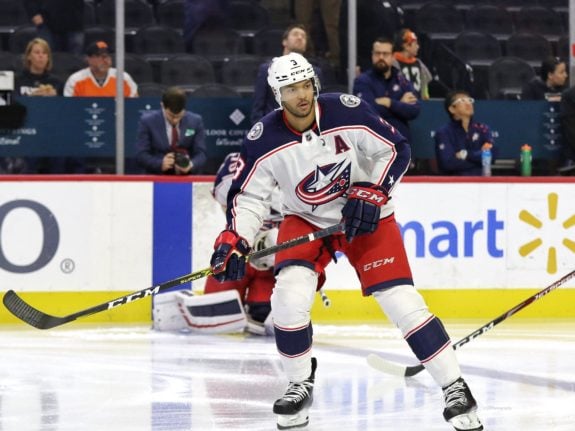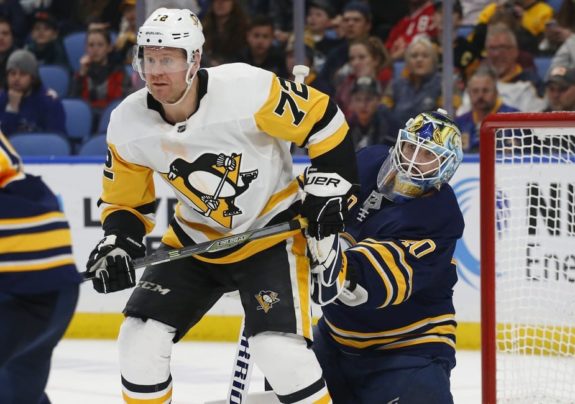As a smaller expansion market, the Nashville Predators drafted and developed most of their own talent in the early years. Players weren’t eager to join a new franchise that didn’t have a large wallet or a large following in the city. If the Predators were able to develop a star-caliber player, then they made their best effort to keep them.
What that means is that in the history of the Predators franchise there aren’t many players that “got away”. However, it also means that in order for the team to fill an immediate hole, they had to deal valuable assets. In some cases, the players continued to grow after they left Nashville, and played their best hockey outside the Music City.
Seth Jones – Fourth Overall in 2013
With the franchise’s highest selection since their inaugural pick of David Legwand in 1998, the Predators were happy to grab Seth Jones who wasn’t expected to still be on the board at fourth overall. However, he wasn’t the forward that the team wanted, and despite some strong play in his two-and-a-half seasons in Nashville, he was never quite afforded the opportunity to shine due to the team’s depth on defence.

Nowadays, Jones is a bit of a lightning rod for debates between the analytics community and those who go by the “eye-test”, but no one can argue with the positive growth he has shown in Columbus and the incredible impact he has had on the team. He logs major minutes (averaging over 25:00 per game each of the last three seasons) as the team’s most capable defenceman, meaning he has been matched up against the opponent’s top players on a nightly basis, and in spite of that has positive possession and play-driving numbers to go with a point every other game.
His offensive numbers have dropped over the last couple of years, but the emergence of teammate Zach Werenski has made that facet of Jones’ game less necessary, and he has taken on a bit more of a two-way role. At this point in his career, there aren’t many forwards that you could entice the Blue Jackets to trade Seth Jones for, he’s too valuable of a player.
Patric Hornqvist – 230th Overall in 2005
Back in the 2005 draft, 29 other teams were done and ready to go home, waiting for a final pick from the Predators. All of the initial seven rounds were completed, but there were a few compensatory picks added at the end as a part of the free agent process. The Predators received a compensatory pick for Group III free agent Wade Flaherty, and it was the last selection of the draft. They took a shot on a power-forward out of the Swedish Elite League, and he turned out to be one of the best selections in franchise history.

Hornqvist showed well in five full seasons with the Predators, but it wasn’t until he was flipped to the Pittsburgh Penguins (along with Nic Spaling) for James Neal, that he finally took off. It’s not hard to see why, as he finally had star centres to play with, and he was able to be a key net-front presence on a top power play. Hornqvist posted the highest scoring pace of his career in his first season with the Penguins. After leaving the Predators he also developed into a bit more of a physical presence, adding some large hit totals to his consistent scoring paces. This season, Hornqvist is once again shining with a new team, putting up the second-best statistical season of his career as a member of the Florida Panthers.
Samuel Girard – 47th Overall in 2016
If Girard had the opportunity to shine with the Predators, then he absolutely would have. However, through no fault of his own, he was shipped out of town before he could even get his foot properly wedged in the door. He was only 19 at the time, and like Jones, was the casualty of a numbers game on defence. The inexperience and the positional depth made him expendable in the infamous Matt Duchene trade.

Since then, all Girard has done is thrive at both ends of the rink for the Colorado Avalanche. He has grown into a top-four role, and is a core piece on one of the most dominant teams in the league. His underlying numbers have even prompted some to toss his name in the ring for Norris Trophy consideration this year – for a small player who doesn’t see top power-play minutes, that is a big deal.
Moving Forward
The Predators will hopefully continue their history of successfully drafting and developing talent, but with now being seen as a city where players want to play, they won’t have to move as many young pieces away to fill other holes. In the long-term, that means that the team can be set up for sustained success, and any possible playoff misses won’t be the sign of a long and arduous rebuild.
Related: Predators are Getting More From Duchene Than the Scoresheet Shows
In the cases of the players above, it can be tough to see players like this thriving away from the Predators, but it shows that the system works, and you have to feel good for the players themselves. Whether it’s Girard breaking in as an undersized defenceman, Hornqvist’s longevity despite being the last selection in the draft, or Jones carrying the torch as a person of colour who has grown into an annual Norris candidate, there’s a lot still to cheer for with these players that no longer wear Predators gold.